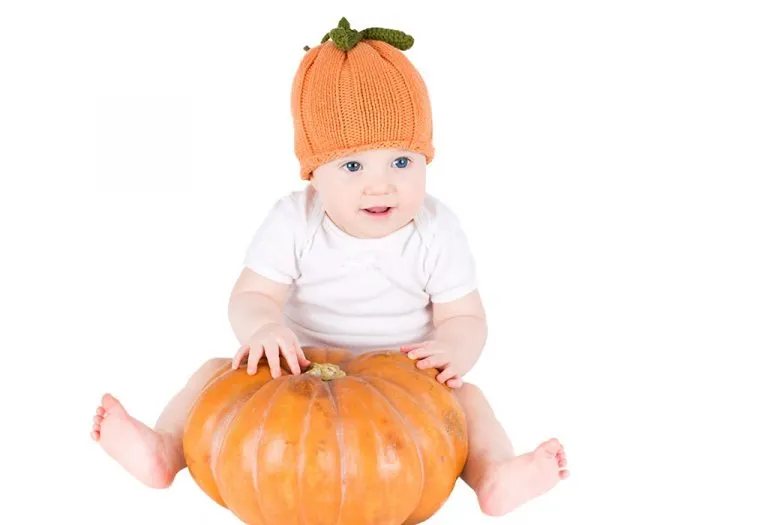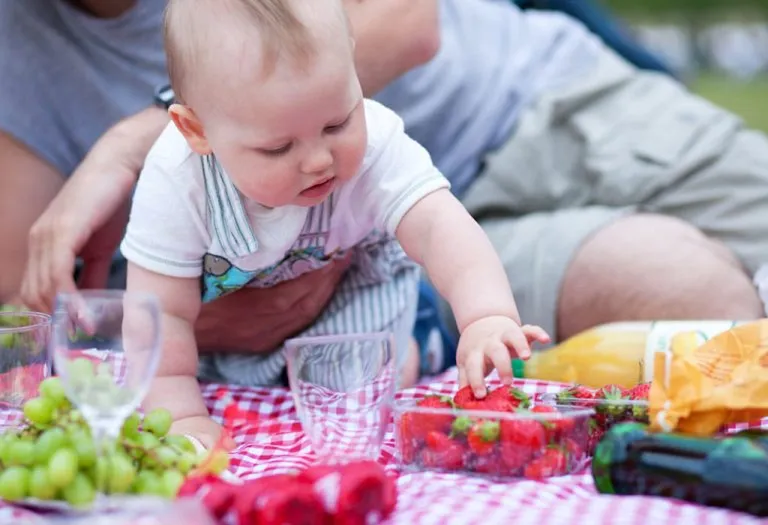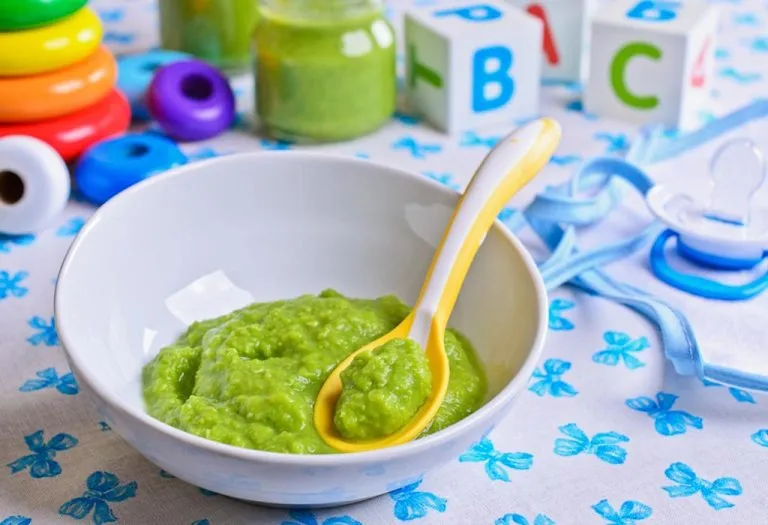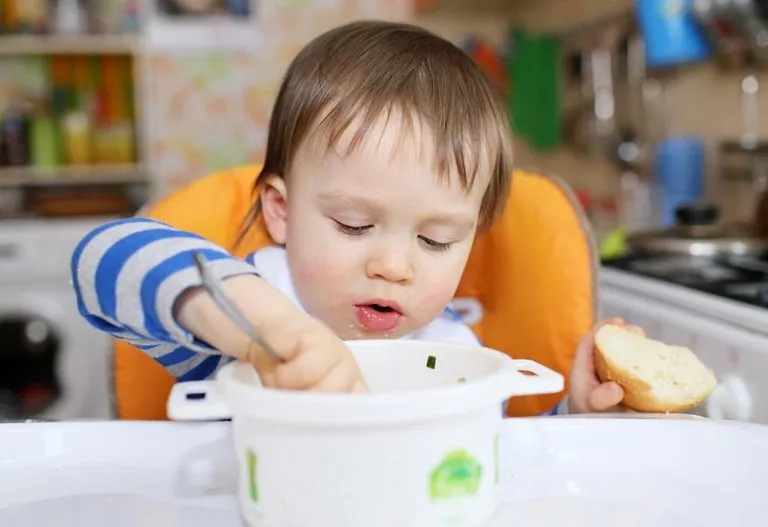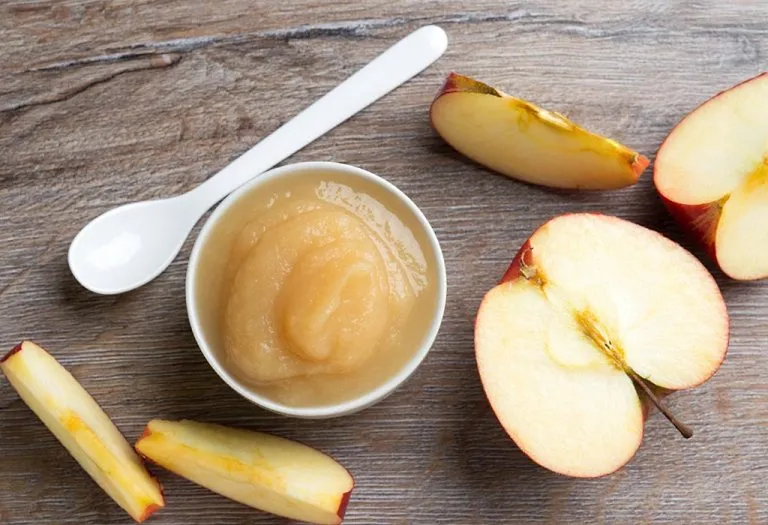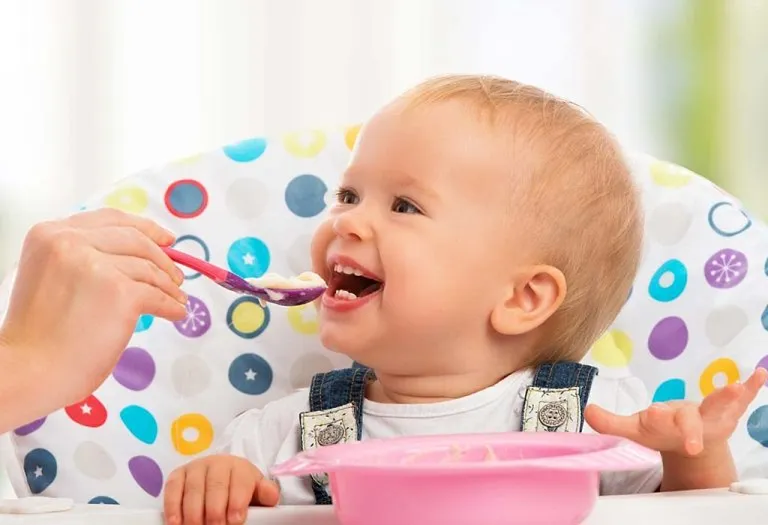Pumpkin For Babies: Benefits and Recipes

- Video: Pumpkin For Babies – Benefits and Recipes
- Can Pumpkin Be Given to Babies?
- Best Time to Introduce Pumpkins to Babies
- Pumpkin Health Benefits for Babies
- What Is the Nutritional Value of Pumpkin?
- Ways to Cook Pumpkin for Your Child
- Video: How to Make Pumpkin Puree for Babies?
- Simple and Easy to Make Pumpkin Recipes for Babies
- How to Prepare Pumpkin for Baby-Led Weaning?
- FAQs
When your child is about 6 months old, he starts teething, and is able to start chewing some of the solid foods you give him. This begins your little one’s transition to eventually eating the same food you do, and is filled with many firsts. Remember, you can experiment and understand your baby’s tastes, as he explores different flavours and textures. You might not always be successful, but that’s okay. This is the best time to introduce nutritious fruits and vegetables, and build a healthy diet for your little one. Pumpkin is one such vegetable! It has great nutritional benefits, and is rich in beta carotene. Read on to know more about the benefits of pumpkin in your baby’s diet, and how you can use it in several baby-friendly recipes.
Video: Pumpkin For Babies – Benefits and Recipes
Can Pumpkin Be Given to Babies?
Yes, you can safely give pumpkin to babies. In fact, pumpkin contains several nutrients that help your child build a strong immune system. It also has anti-microbial properties that kill harmful germs in your child’s intestine. This makes it an essential ingredient in your little one’s diet to keep him healthy.
Best Time to Introduce Pumpkins to Babies
The best time to include pumpkin in your child’s diet would be when your child starts developing milk teeth. This process starts anywhere between 3 to 12 months, but most commonly around 6 months. However, it is not recommended to introduce solid foods to your child before the age of 6 months. So, after your little one hits the half-year mark, you can try feeding him pumpkin amongst other solid or semi-solid foods.
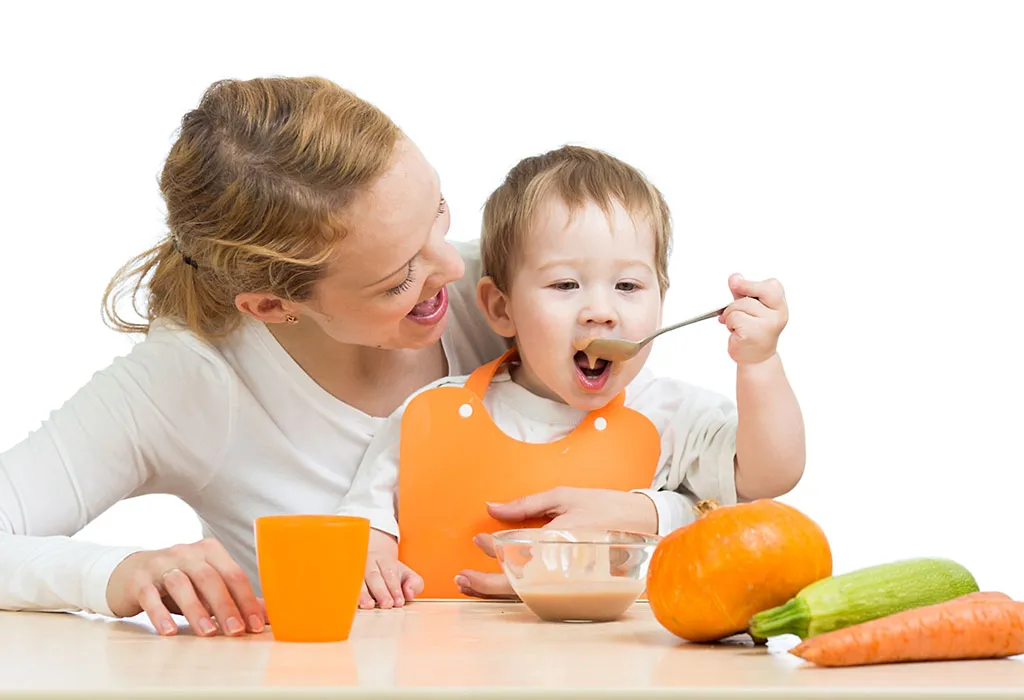
Pumpkin Health Benefits for Babies
Along with being tasty and easy to eat, pumpkin is incredibly nutritious. Here are some pumpkin benefits for a baby.
1. Essential Nutrients
Pumpkin has many of the essential vitamins and nutrients your child needs to grow. It contains several minerals, like calcium and magnesium, which help your child’s bones to become stronger. The phosphorus in pumpkin can also improve brain functions, keep hormone levels balanced, and improve digestion.
2. Eye Health
Pumpkin is a storehouse of Vitamin A, which is an essential nutrient for eye health. It facilitates good vision both in daylight and at night. It is also rich in carotenoids, which reduce the risk of several eye diseases and conditions. These carotenoids help reduce macular degeneration (accumulation of fatty substances on the retina that cause blurred vision) in both kids and adults alike. Carotenoids is responsible for the bright orange colour of the pumpkin!
3. Improves Digestion
Pumpkins are high in fibre, which aids in digestion. They can help regulate bowel movements in your child, and keep constipation away.
4. Rich in Antioxidants
Pumpkins contain high levels of beta-carotene, which is an antioxidant, and reduces the oxidative stress on many organs. Oxidative stress refers to an imbalance in the production of free radicals in your body. Over time, it can trigger chronic diseases such as diabetes and cancer. Your child’s body can also convert beta-carotene into Vitamin A, to add to the benefits!
5. Brings a Glow to the Skin
The carotenoids help remove the free radicals in your child’s body, which helps clear up the surface of your child’s skin, making it glow. It can also keep skin diseases at bay.
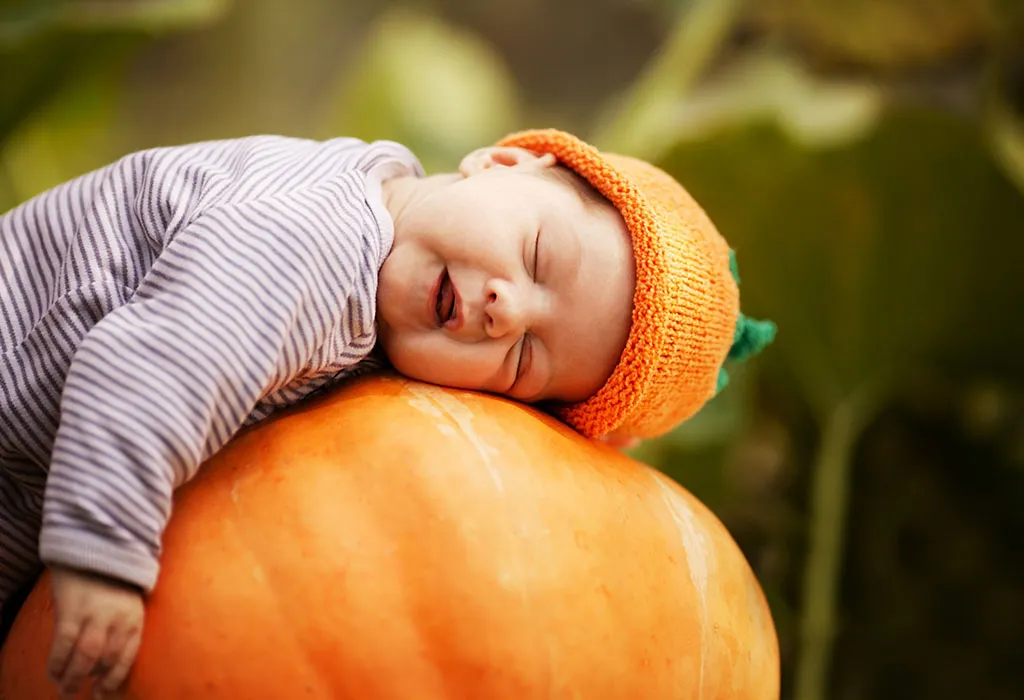
6. Increases Energy Levels
Potassium is a great source of energy, and just one cup of pumpkin is a great source of potassium. It improves the balance of electrolytes in the blood, and improves muscle functionality.
7. Boosts the Immune System
Pumpkins contain large amounts of Vitamin C and biochemicals that protect your child from the cold and flu. They also have anti-microbial properties that improve your child’s immunity.
8. Promotes Good Sleep
A substance called tryptophan present in pumpkins helps produce serotonin in our bodies. Serotonin is an amino acid that induces calmness in the body, and allows for better sleep at night.
9. Anthelmintic Properties
Babies, who have still-developing immune systems, are not just prone to microbes, but also worms and other parasites. The anthelmintic properties of pumpkin (the power to destroy worms) keep these worms and parasites at bay to keep your child healthy.
What Is the Nutritional Value of Pumpkin?
The table below lists the nutritional content of pumpkin.
| Nutritional Content | Value per 100g |
| Energy | 26kcal |
| Water | 91g |
| Sugar | 2.8g |
| Carbohydrates | 6.5g |
| Protein | 1g |
| Lipid Fat | 0.1g |
| Fibre | 0.5g |
| Iron | 0.8mg |
| Calcium | 21mg |
| Magnesium | 12mg |
| Potassium | 340mg |
| Phosphorus | 44mg |
| Vitamin C | 9mg |
| Vitamin B6 | 0.06mg |
| Vitamin A | 8510 IU |
| Vitamin E | 1.1mg |
| Vitamin K | 1ug |
| Folate | 16ug |
| Zinc | 0.3mg |
| Sodium | 1mg |
| Thiamin | 0.05mg |
| Niacin | 0.6mg |
| Riboflavin | 0.1mg |
Ways to Cook Pumpkin for Your Child
There are several ways you can cook or bake a pumpkin before serving it to your child. Listed below are some ways in which you can prepare pumpkin for meals.
1. Baking Method
After cleaning the pumpkin, chop it in halves, brush them with olive oil, and place them skin side down on a baking tray. Bake for about 45 minutes at 375 Fahrenheit, or until the pumpkin flesh is tender. Remove them from the oven, and scoop the pulp out into a bowl. Adding some butter is a good idea.
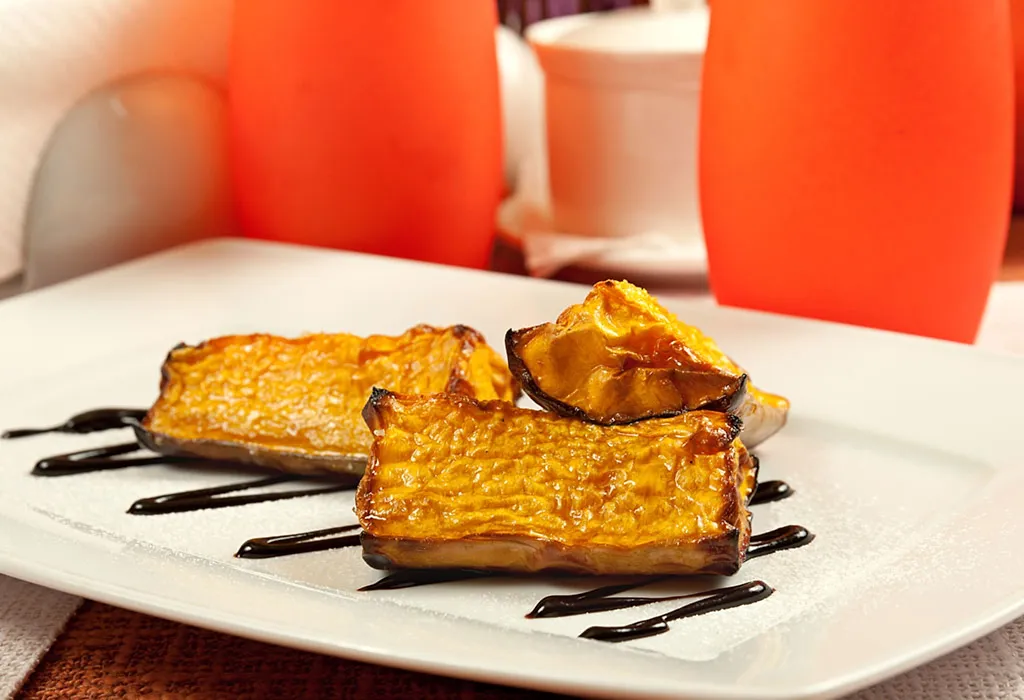
2. Boiling Method
Bring some water to boil. Put in the chopped pumpkin, and cook them until they are tender. Drain the water, and let the pumpkin cool for a few minutes. You can either use this immediately, or freeze it. Do not simply refrigerate the cooked pumpkin, as it can develop a brownish orange colour that is not healthy to consume.
You can even feed the pumpkin raw in the form of a puree, either plain or along with some cereal or yoghurt.
Video: How to Make Pumpkin Puree for Babies?
Simple and Easy to Make Pumpkin Recipes for Babies
1. Simple Pumpkin Puree for Baby
Boil the pumpkin in water until it is tender. Drain the pumpkin pieces, and blend them to form a puree. You could even add water or breast milk to get the desired consistency of the puree.
2. Apple and Pumpkin Puree
Chop one pumpkin and three peeled and de-seeded apples. Boil them in water until they are tender. After cooling, mash the mixture to make a puree, and add some cinnamon for added flavour.
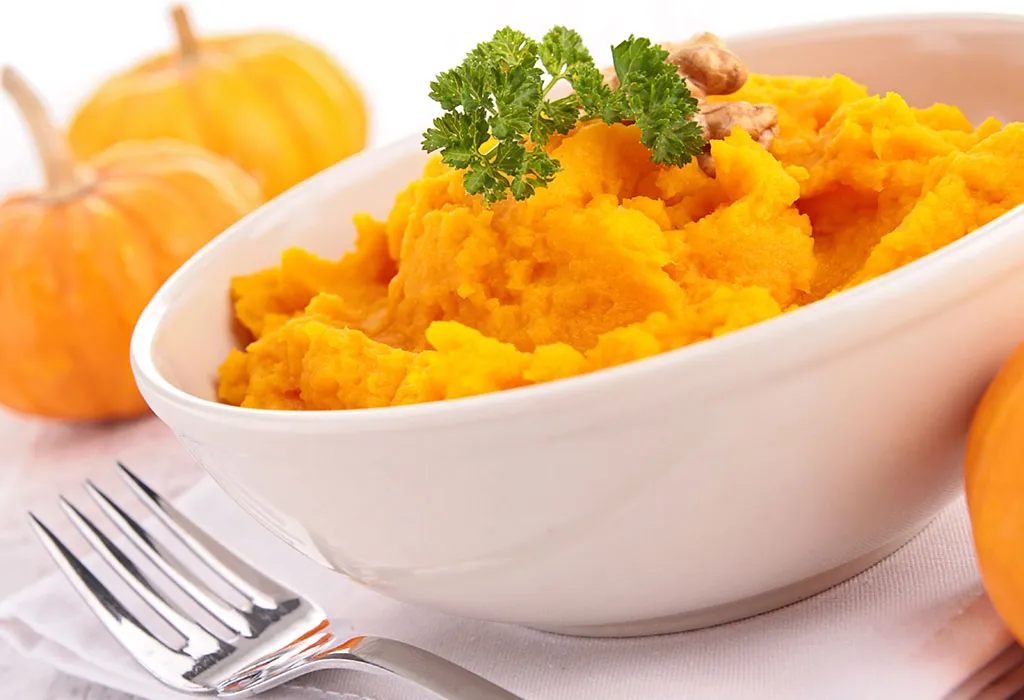
3. Pumpkin Soup
Making pumpkin soup for your baby is a great way to integrate it into his diet. To prepare:
- Heat and melt 2 tbsp of butter in a pan.
- Add a quarter cup of chopped onions, and sauté.
- Add three cups of cubed red pumpkin, and sauté for a few minutes.
- Add three cups of water, and salt and pepper. Cook the soup until the pumpkin becomes tender.
- Let the mixture cool for about 15 minutes, then blend it in a blender.
- Add the soup back into the pan, add a quarter cup of cream, and bring it to a boil.
- Garnish the soup with some spring onions before serving.
4. Pumpkin and Pear Puree
Follow the recipe for the above-mentioned apple and pumpkin puree, substituting the apple with chopped pear.
5. Pumpkin, Bananas and Peaches
Steam one banana and one peach together until they become tender. Mash or blend them into a mixture. Mix this with freshly prepared pumpkin puree, and serve.
6. Brown Rice and Pumpkin Porridge
Brown rice is slightly difficult to digest, so just use about half a tablespoon of rice.
- Clean and soak the rice in water for half an hour.
- Steam a peeled and chopped pumpkin.
- Add the soaked rice to the pumpkin, and boil on high flame for a couple of minutes, then simmer for five more minutes.
- Strain and cool before serving.
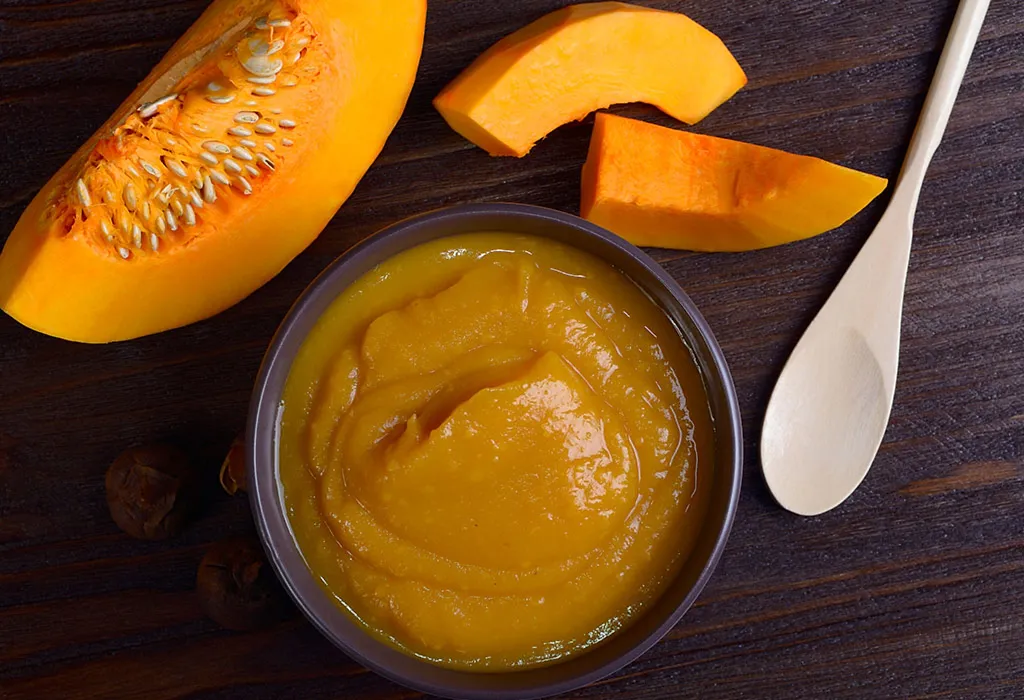
7. Pumpkin and Spinach Roti
For this, you need a cup of finely grated red pumpkin, one cup of chopped spinach, one cup of flour (preferably whole wheat), half teaspoon of turmeric powder, some oil and butter, and salt to taste.
- Heat the oil in a pan, and sauté the spinach for a couple of minutes, and remove. Let this cool for a while.
- Mix flour, pumpkin, and turmeric powder, and knead into a soft dough.
- Roll some balls, and flatten them to make rotis.
- Cook the rotis well on a pan with butter, and serve with the spinach.
8. Pumpkin Kheer
Kheer is nutritious, sweet, and the ultimate comfort food. Here is how you can prepare pumpkin kheer for babies.
- Wash, peel, and chop the pumpkin into small pieces.
- Steam the pumpkin for 15 minutes.
- Add pumpkin, some milk, and sugar, and blend into a fine paste.
- Transfer the blended mix into a pan and cook for 5 minutes. You can adjust the quantity of milk as per your preferred thickness.
- Turn off the flame, let the kheer cool, and serve.
9. Pumpkin Oatmeal
This pumpkin oatmeal is super easy to prepare and sure to be your child’s favourite dish.
- Wash, peel, and mash the pumpkin. Keep aside.
- In a pan, cook oats and milk until soft.
- Add the pumpkin mash, along with sugar if needed.
- Cool and serve to your little one.
How to Prepare Pumpkin for Baby-Led Weaning?
If you’re looking for foods to wean your baby off milk, pumpkin is one of them. The below suggestions will help you learn how to prepare pumpkin for baby-led weaning, according to your child’s age.
1. For 6-9 Months
Cook the pumpkin well and mash it before feeding it to your child. Choose a pumpkin that is sweet, so your baby will most likely enjoy eating it. You can also offer small wedges of pumpkin to your baby, but ensure you supervise him while he eats it.
2. For 9-12 Months
By now, your baby might have developed the pincer grasp, so you can begin giving him finger foods. Offer bite-sized pieces of boiled or steamed pumpkin. You can also continue with pumpkin mash if he prefers it.
3. For 12-24 Months
This is a good time to encourage usage of cutlery. Give your child bite sized pieces of steamed or boiled pumpkin and encourage him to use a fork while eating it. Make sure you supervise your child at all times when feeding.
FAQs
1. Can I Give Pumpkin Daily to My Baby?
Pumpkin is loaded with nutrients and is tasty too, making it a great option to include in your baby’s daily diet. Make sure it is cooked well, and avoid any canned pumpkin goods. Go for fresh pumpkins instead.
2. Can Pumpkin Cause Choking Issue in Babies?
Not necessarily, if it is prepared well. Cook the pumpkin well and cut it into bite-sized pieces. Ensure you supervise your child to ensure there is no choking issue. Additionally, only offer mashed pumpkin to babies under 9 months of age.
3. Can Babies Be Allergic to Pumpkin?
Pumpkin allergies are rare, but they do exist. When introducing this food to your child, feed him a small amount the first time and observe him for the next 24 hours for any reactions. If there is no issue, you can continue feeding him pumpkin.
4. Are White Pumpkins Safe for Babies?
Yes, pumpkin is nutritious and safe for babies. Ensure you cook it well and mash it or cut it into bite-sized pieces before feeding it to your little one.
5. Is Canned Pumpkin Safe for Babies?
It is safe to feed your child canned pumpkin, as long as it is pure pumpkin. Some cans also contain a pumpkin pie mix, which contains starch, sugars, and other additives, which can be unhealthy for your baby. This is the reason why most doctors recommend that you avoid the usage of canned food for your child. Ensure that you read the label to know that you’re buying the right pumpkin for your child.
6. How to Select Pumpkin for Your Baby?
Pumpkins don’t generally require the use of pesticides, so most of the time they are safe to consume. But, if you still want to purchase an organic pumpkin for your child, then that is your personal choice.
Pick smaller and less matured pumpkins for your child. These are also called sugar pumpkins, cooking pumpkins, and even pie pumpkins. They have less fibre in them compared to the larger ones, and also have a sweet and firm pulp. These can add an extra flavour to soups and baked foods. Also, ensure that you pick a pumpkin that is slightly heavy for its size. This means that it has greater water content in the pulp.
If you’re buying a pack of peeled and chopped pumpkin, then ensure that the colour is a dark or deep orange. For an uncut pumpkin, buy one with a bright orange colour and without any spots or cuts on the surface. Ensure that it isn’t too ripe as well.
7. How to Cook Pumpkin?
Before preparing any recipe with pumpkins, ensure that you peel it and clean it with a vegetable brush to remove any dirt. Use cold water to rinse the pumpkin. Then, cut the pumpkin in half and scoop out the seeds with the help of a spoon.
If you prefer pre-cut pumpkins, then ensure that you rinse them in cold water in a colander before using. After this, the pumpkin can be used for whatever dish you want to make.
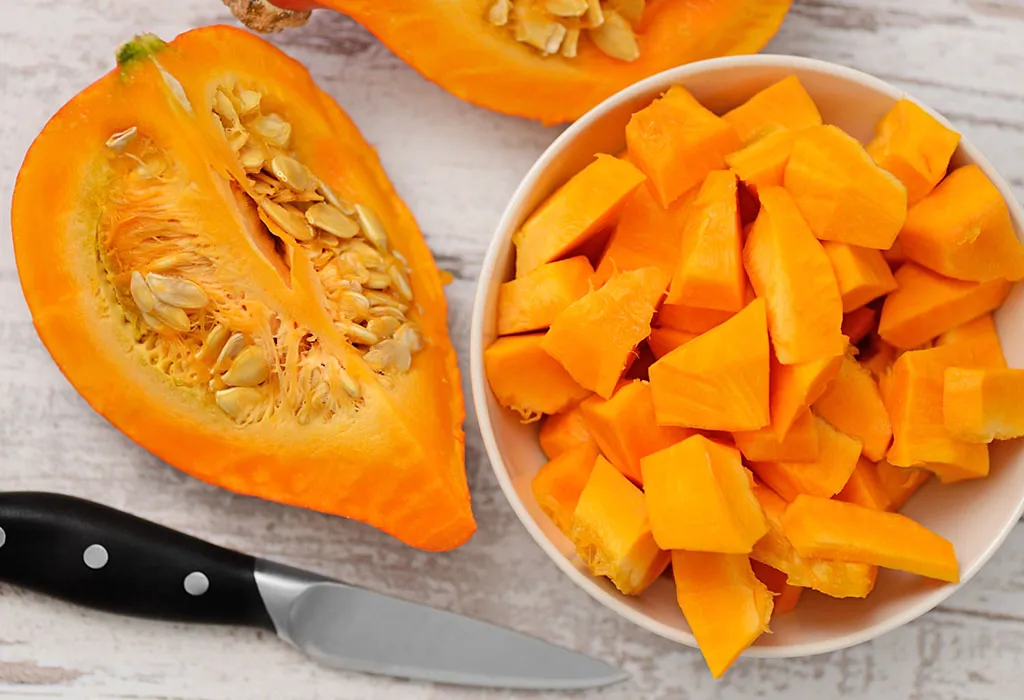
Always cook the pumpkin right after you cut it. Avoid prolonged cooking, as this can reduce the nutritive value of the pumpkins. Use any of the recipes mentioned above, or try other pumpkin baby food recipes to include it in your child’s diet.
Your child might love discovering new flavours and tastes, but it is necessary that you consult with your doctor before introducing any new food. Also, try just one food at a time, to better understand if they cause any allergies or side effects. If your child is keeping unwell or is on medication, don’t introduce a new food into his diet.
Pumpkin is a versatile food that goes well with other vegetables, fruits, and even meat. You can try mixing pumpkin with rice, lentils, pears, broccoli, and many other foods to give your child all the nutrients he needs to grow.
References/Resources:
1. Pumpkin, fresh, cooked, fast not added in cooking; U.S. Food and Drug Administration; https://fdc.nal.usda.gov/fdc-app.html#/food-details/342434/nutrients
2. Fritsch. R, Ebner. H, Kraft. C, Ebner. C; Food allergy to pumpkinseed–characterization of allergens; PubMed; https://pubmed.ncbi.nlm.nih.gov/9140526/; March 1997
3. Baby-Led Weaning: What You Need to Know; Cleveland Clinic; https://health.clevelandclinic.org/baby-led-weaning/; October 2021
4. Feeding your baby: 6–12 months; UNICEF; https://www.unicef.org/parenting/food-nutrition/feeding-your-baby-6-12-months
5. When, What, and How to Introduce Solid Foods; Centers for Disease Control and Prevention; https://www.cdc.gov/nutrition/infantandtoddlernutrition/foods-and-drinks/when-to-introduce-solid-foods.html; June 2023
Also Read:
Cabbage for Babies
Introducing Arrowroot to Infants
Is it Safe to Give Cauliflower to Babies
Was This Article Helpful?
Parenting is a huge responsibility, for you as a caregiver, but also for us as a parenting content platform. We understand that and take our responsibility of creating credible content seriously. FirstCry Parenting articles are written and published only after extensive research using factually sound references to deliver quality content that is accurate, validated by experts, and completely reliable. To understand how we go about creating content that is credible, read our editorial policy here.







